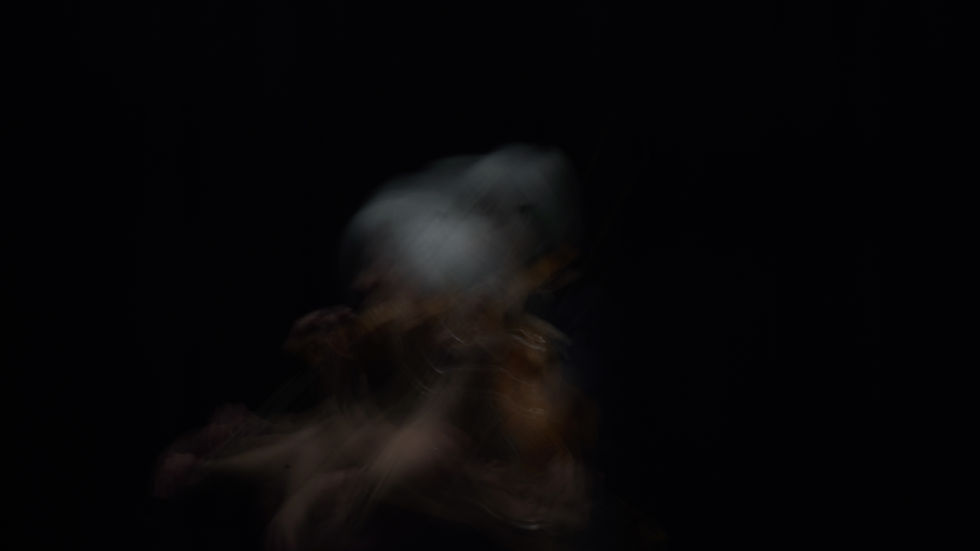becoming one: photography, improvisation and creative eruptions
- infofreigedanke
- 18. Juli
- 3 Min. Lesezeit
Aktualisiert: 23. Juli

Where does music come from when you improvise?
Asking about the 'where' of things excites me from a phenomenological perspective: the relation of our bodies to the phenomena of our surrounding world. But in this project with Dr Nicky Haire, my fascination was more literal.
Nicky and I got together for a morning to play with violin and camera in our university's blackbox studio. Nicky's interest lies in music improvisation and the role it plays in music therapy. Without knowing exactly where we wanted to take this, we were keen in bringing together music, photography and film, to see if one could capture the other, what kind of dialogue would emerge.

Improvisation, to me, interweaves time, space and bodies in the most complex of manners. On the one hand, you let every note erupt from the present; on the other, you lean into techniques, theory and skills you've learned in the past. You feed off the space you play in, while also forgetting it. If you've ever watched someone improvise music, you realise very quickly what's at the centre of those creative affects: the body. Very much part of the instrument. Becoming the instrument. Even now, I can't remember so much of the music that Nicky played, but I remember the way she moved her body.

As a classically educated pianist, tuned to learning music through reading its written score, I've always found it hard to detach myself from the score. Even if my body knew the piece by heart. It somehow helps me to hold onto a visual pattern as I progress through the piece. In other words, improvising is pretty far out my comfort zone. And if I do, it's slow and tentative, uncertain about the uncertainty of direction or quality of the sound.
Improvising with the camera, however, I find much easier. Whether it's because of a different skillset, or a different way of having been trained, I'm not sure. I wasn't "trained" as such in photography, I learned much more sporadically from other people, the world around me, and my own intuition. So being in a space, observing what's around me and tuning my camera to it comes naturally to an extent, pleasurably for sure.
Experimenting with Nicky, the methods of music improvisation definitely spilled into my photography practice. Watching Nicky play, I was also drawn to techniques that I know and do well. Long exposure photography, slow motion videography, various kinds of distortions that foreground interiority more than appearance. As improvisation prises open known patterns, I also began to leave my usual inconspicuous background place as a photographer. As Nicky moved around the room, I began to move in ways I usually don't when I document something or someone. Swift pans or tilts, making soft steps in my socks, moving close to Nicky, observing from a corner. Quickly letting go of worrying whether Nicky could hear me or not, I was drawn into the energy field that Nicky created.
Sinking into the music's resonances through my viewfinder, I paid attention to how Nicky moved in and out of the frame, how she moved the music around the room, and also how the music moved her around inside my frame.
Other things I wondered: How can the camera (and my body attached to it) mimick Nicky's movement? How does the dynamic or tonality of the music relate to my images? What kind of elusive textures, silences and harmonies could become visible in the images?
Looking at the photographs, it's clear that improvisation makes body and instrument one. The images capture the particular energy that brings forth the newness of improvised music. So where does music come from when you improvise? The photographs say: from a new, ever-shifting, becoming body formed by instrument, human body, knowledge, memory and space, as quickly assembled as it dissolves.
As much as I've been thinking in my own research about collapsing binaries between making/thinking, theory/practice, art/thought, I wonder if it's a similarly articificial construct to separate writing music/playing music, reading music/embodying music... Aren't they not only seamlessly moving in and out of each other, but can the camera help us to understand them as one and the same?


Kommentare